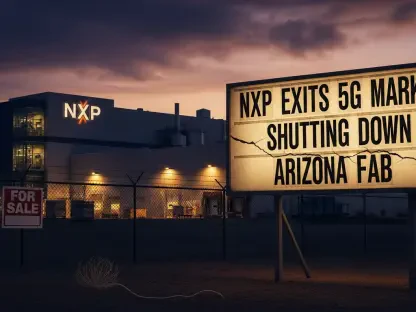In today’s rapidly evolving global economy, the infusion of private capital into infrastructure assets is reshaping the landscape, marking a significant shift in investment dynamics. This trend is fueled by the urgent need for a green energy transition, driven by environmental imperatives, economic changes, and technological innovations. As nations strive to adapt to these challenges, the focus is increasingly on renewable energy, digital connectivity, and robust transportation systems. Private capital has emerged as a key player in this transformation, with both listed and unlisted infrastructure assets drawing heightened interest from investors. This surge can be attributed to major trends in energy transition and digitalization, as infrastructure now serves as an attractive avenue for investors seeking inflation-linked returns in a world that is changing faster than ever before.
Surge in Market Value
The global infrastructure market has witnessed remarkable growth, with its value projected to reach $1.22 trillion by the close of 2024, representing a notable 12.4 percent year-over-year increase. This impressive growth highlights infrastructure’s appeal and financial potential, making it the fastest-growing sector within private markets over the past decade and a half. Its charm lies in the sector’s ability to deliver stable and predictable cash flows while safeguarding against inflation. Many infrastructure assets are fortified by long-term contracts extending over 20 years, ensuring the provision of essential services that remain insulated from market fluctuations. This stability makes infrastructure investments incredibly attractive for investors who prioritize long-term, consistent returns amidst economic uncertainties.
The global push towards sustainable energy solutions has greatly influenced investment patterns within the infrastructure domain. Power production and transmission operators have emerged as significant beneficiaries, bolstered by government support through extended contracts. Traditional thermal power producers are gradually shifting away from coal and fortifying their renewable energy portfolios, reflecting a broader global shift towards sustainable practices. Transmission and distribution grids are adeptly positioned to leverage these changes. As green energy is generated, it necessitates efficient transmission to consumption locales. This necessity drives up capital expenditures for regulated businesses, intertwining profitability directly with these investments. Such dynamics underscore an ongoing transformation in the energy landscape, driven by policy reforms and investor enthusiasm for greener, cleaner energy options.
Emerging Infrastructure Sub-sectors
Simultaneously, diverse infrastructure sub-sectors are actively incorporating sustainability objectives to align with global green energy initiatives. Projects such as toll roads equipped with EV charging stations and ports using eco-friendly construction materials are gaining traction. However, these projects also encounter challenges posed by political and macroeconomic factors. Political fluctuations, such as a potential shift in the U.S. presidency, might present hurdles to renewable investments. For instance, previous administrations exhibited tendencies to disrupt offshore renewable projects, raising concerns over regulatory stability. Alternatively, a political landscape favoring decreased regulation could boost infrastructure investments, particularly those related to fossil fuels. Despite these challenges, the broader infrastructure market remains robust, thanks to its resilience in periods of slower economic growth and heightened inflation.
In the evolving infrastructure sector, the steadfast stability provided by regulated businesses with the ability to set prices remains a defining characteristic. This stability offers an effective inflation hedge, ensuring infrastructure maintains its role as a reliable investment. Infrastructure’s strong demand, partially fueled by the competitive pricing of renewable energy, is a sentiment echoed by industry leaders. As demand for infrastructure rises, investors continually see it as a strategic tool to navigate economic challenges. Beyond stability, infrastructure investments offer attractive returns, drawn by the enduring allure of sustainable solutions. Projects in mid-market infrastructure, particularly in power and data, have surfaced as new growth areas. They act as platforms to enter larger opportunities presented by industry giants.
Opportunities in Mid-Market Projects
With emerging markets drawing increasing attention, distinct risk considerations require careful management. The need for infrastructure modernization transcends all regions, cutting across both low-income nations and developed regions like Western Europe and North America. Untapped private capital, presently exceeding $300 billion, holds the potential to align expected returns with these opportunities across numerous markets. This accumulation of funds is already influencing market dynamics, resulting in elevated valuations and potentially shifting market expectations. Some commentators draw parallels between current enthusiasm for private infrastructure and historical investment trends in hedge funds, emphasizing the resilience and potential longevity of this trend.
A pivotal factor sustaining interest in infrastructure is the interplay of political and economic factors, without which a comprehensive understanding of the market remains incomplete. Deregulatory measures, such as changes in environmental regulations, can ease pressures on public companies while creating avenues for private players to navigate regulatory constraints. This creates an environment conducive to maximizing returns, providing a critical edge to those venturing into the infrastructure domain. The campaign for decarbonization and digitalization stands out as a key driver for infrastructure investment across both private and public sectors, with capital deployment evolving in response to varying economic landscapes and governmental policies.
Resilience and Strategic Importance
The global infrastructure market is experiencing significant growth, projected to reach a value of $1.22 trillion by the end of 2024, marking a 12.4% increase year-over-year. This surge underscores the sector’s financial potential and prominence as the fastest-growing within private markets over the past 15 years. Its allure comes from its ability to provide stable, predictable cash flows and hedge against inflation. Infrastructure investments often come with long-term contracts, sometimes extending over 20 years, which secure essential services impervious to market instability. This stability attracts investors seeking dependable, long-term returns, especially during economic uncertainties.
The global shift towards sustainable energy greatly impacts investment trends in infrastructure. Energy production and transmission operators are prime beneficiaries, enjoying government support via extended contracts. Traditional thermal power producers, moving away from coal, are expanding their renewable energy portfolios, reflecting a worldwide trend towards sustainability. Efficient transmission and distribution grids are critical, as green energy demands effective delivery to consumers, driving capital investments by regulated companies. This transition underscores a shift fueled by policy changes and investor interest in greener energy solutions.









